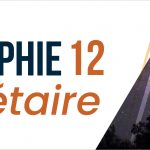

Physics 12/Advanced Physics 12
First and Second Semester
Physics 12 consists of 13 areas of study:
Unit 1: Projectile Motion: motion in two dimensions;
Unit 2: Static Equilibrium: mathematical analysis of static systems;
Unit 3: Relative Motion: use vector analysis to solve problems involving relative motion in two dimensions;
Unit 4: Circular Motion: horizontal and vertical circular motion;
Unit 5: Universal Gravitation: gravitational attraction between two or more objects;
Unit 6: Collisions: collisions and explosions in two dimensions;
Unit 7: Simple Harmonic Motion: mathematical analysis of simple harmonic motion to describe wave motion;
Unit 8: Field Theory: gravitational, electric and magnetic fields;
Unit 9: Electric Circuits: series, parallel and combination circuits;
Unit 10: Electromagnetism and Electromagnetic Induction;
Unit 11: Generators and Motors: compare and contrast the way generators and motors function using the principle of electro-magnetism;
Unit 12: Waves and Modern Physics: history of quantum physics;
Unit 13: Radioactivity: natural and artificial source of radiation, radioactive decay, fission and fusion.
Advanced Physics 12
Advanced Physics 12 is an enriched version of Physics 12 for students with above-average ability, with a particular interest in the subject and who are self-motivated. Topics of study are the same as those for Physics 12 (Force, Motion, Work, and Energy; Electric, Gravitational, and Magnetic Fields; Waves and Modern Physics; and, Nuclear Physics) but are covered in more depth.
Students are expected to make use of more advanced problem solving skills, to take a more mathematical approach to problems, and to work more independently.
Additional course details and documents are available on the Nova Scotia Curriculum site’s Physics 12/Advanced Physics 12.
Course Additional Information
Course Materials
McGraw-Hill Ryerson Physics
Technology
Laptop or desktop device with Windows, Mac, or Chrome OS. Webcam and headset with microphone. Access to Google Workspace for Education (GNSPES/SEPNE) or other productivity software.









